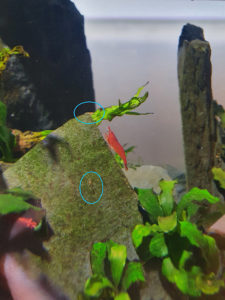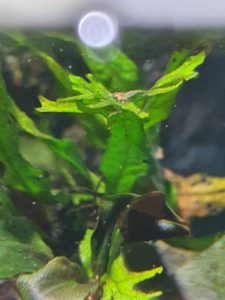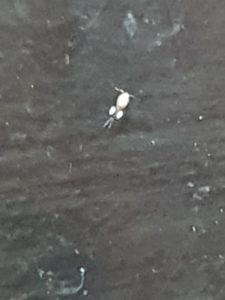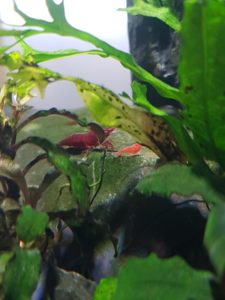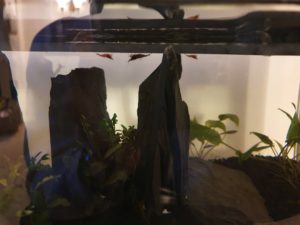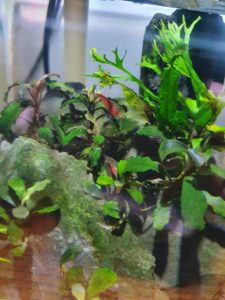Three weeks after the first sighting of a new baby shrimp we seem to have arrival of the next crop. These guys are really tiny which does suggest the earlier one had been hiding out for a week or so before debuting. There was a 50% water change today – the usual story with EI dosing – and I was a little concerned the new baby shrimp might get inadvertently changed out along with the water, but they seem to have hung on well and are none the worse for wear. The successful shrimp breeding suggests we may shortly be inundated with shrimp in the Shrimphaus, but we’ll worry about that later.
Even newly hatched bloody mary shrimp are red
Even the tiniest of these new bloody mary shrimp have an easily distinguished red colouration. So far the colour has bred really true, which is pretty typical for reports of bloody mary shrimp. I saw an interesting video where a guy with a pretty normal looking bloody mary shrimp tank went and did an actual count during some rescaping that came in at 600 shrimp in a 5 gallon tank. That’s about the same size as the shrimphaus! Everything was looking happy and healthy there so maybe overpopulation isn’t such a concern after all.
